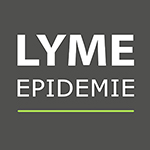The Royal Lyme Letter
Dear Majesty,
My name is [name] and I suffer since [year] from Lyme disease. I have been misdiagnosed for [years] before Lyme disease was diagnosed. I would like to draw your attention to the following:
Failing healthcare drives Lyme patients abroad
Once you get a diagnosis of Lyme disease, you enter a world without recognition, compensation, treatment or help. Chronic Lyme is a terrible disease that does not officially “exist” and is concealed because of money, ignorance and other interests.
The Dutch healthcare system fails to diagnose and treat Lyme disease properly. The “Centraal BegeleidingsOrgaan” (CBO) maintains a guideline consisting in a cure of antibiotics for up to one month, despite a lack of consensus about this directive. There is a prevailing scientific controversy surrounding this debilitating disease. As a result, patients are left to fend for themselves and are forced to go abroad at their own expenses.
The Dutch CBO guidelines are based on the American IDSA guideline for the diagnosis and treatment of Lyme disease. IDSA is a private institution whose aptitude has been seriously questioned by the Connecticut Attorney General following concealed financial interests, ignored evidence confirming the existence of a chronic form of Lyme disease (2008).[i] In spite of these undeniable facts, the same guidelines are still being used to this day.
Lyme disease is one of the fastest growing diseases in the world and is currently the most commonly reported infectious disease in the US.[ii] The US Center for Disease Control (CDC) says the number of Lyme infections have increased from 10,000 to 300,000 up to 1- 2 million per year.[iii] The actual number of Lyme infections is even higher considering the many misdiagnoses received by Lyme patients. Lyme disease is also known as the Great impersonator and is often mistaken for CFS / ME, fibromyalgia, MS, ALS and other multi-system illnesses.[iv] The standard Lyme Tests that are used to demonstrate the Lyme disease, or to be excluded, are only between 34 -59% sensitive, thus a lot of Lyme disease-associated infections are missed.[v] In the Netherlands, 60% of the Lyme disease patients will receive a late diagnosis.[vi]
The government knows that it is a serious illness. Lyme disease is a recognized occupational disease. People in Belgium speak of a chronic form, of permanent disability and death.[vii] Therefore, what causes Lyme disease is very well known. Why limit this recognition to only foresters and leave the rest of the population in the lurch?
This epidemic being kept quiet seems to be exactly the same thing as it was done earlier when HIV/AIDS was not recognized, but this is slowly starting to change. In December 2014, the Senate in Canada took chronic Lyme disease seriously. Unanimously adopted, this law included a provision saying that the current inadequate guidelines deny the existence of a persistent infection leading to the abandonment of sick people with a treatable condition.[viii] Even in the US, they are already some laws that are partially adapted and in two states, changes are in the works but this is not enough.[ix]
It is about time that Belgium and the Netherlands recognize that the current guidelines for diagnosing and treating Lyme disease are inadequate. Even within the group deciding about the CBO directive itself, there is no consensus concerning the sensitivity of the test and the existence of chronic Lyme disease. [x] Consequently, chronically ill patients have to bear the costs of their necessary treatment, and if they cannot afford to do so, they continue to get sick, get worse or even die. If patients do not die from the disease itself, they sometimes end their life because of despair and hopelessness.[xi]
Given the severity of the symptoms and the amount of individual and social consequences (unnecessary disability) it is about time that the guidelines are updated as soon as possible to the actual state of science, in which all scientific studies are considered regarding Lyme disease. Current guidelines are, as the Attorney General of Connecticut also pointed out, not objective. There is no scientific study proving that the Borrelia bacterium that causes Lyme disease has been eradicated from the recommended monthly antibiotics, [xii] while at least 293 peer-reviewed studies show that the Borrelia bacterium persists after this short course.[xiii]
A good replacement of the IDSA / CBO guideline is the guideline for the diagnosis and treatment of Lyme disease which is arranged by ILADS. [xiv]
This international organization does take all available scientific evidence into account and their recommended treatment gives many Lyme patients their life back. Patients suffering from this debilitating chronic illness are entitled to recognition, treatment, compensation and assistance.
Yours sincerely,
[i]
Procureur-Generaal Connecticut, ‘Attorney General’s Investigation Reveals Flawed Lyme Disease Guideline Process, IDSA Agrees To Reassess Guidelines, Install Independent Arbiter’ (2008), http://www.ct.gov/ag/cwp/view.asp?a=2795&q=414284.
[ii]
Center for Disease Control and Prevention (CDC), ‘Lyme Disease Data and Statistics’ (2013), http://www.cdc.gov/lyme/stats/.
International Lyme and Associated Diseases Society (ILADS), ‘Lyme Quick Facts’ (2015), http://www.ilads.org/campaign/lyme-campaign-quickfacts.php.
H. Donohoe, E. Pennington-Gray en O. Omodior, ‘Lyme Disease: current issues, implications, and recommendations for tourism management’, in: Elsevier Tourism Management 46 (2015), http://www.academia.edu/8212032/Lyme_disease_Current_issues_implications_and_recommendations_for_tourism_management.
[iii]
CDC, ‘Reported Cases of Lyme Disease by year, United States, 1995 – 2013’ (2013), http://www.cdc.gov/lyme/stats/chartstables/casesbyyear.html.
CDC, ‘CDC provides estimate for Americans diagnosed with Lyme disease each year’ (2013), http://www.cdc.gov/media/releases/2013/p0819-lyme-disease.html.
R. Stricker, L. Johnson, ‘Lyme Disease: Call for a “Manhattan Project” to Combat the Epidemic’, in: PLoS Pathog (2014), http://www.ncbi.nlm.nih.gov/pmc/articles/PMC3879353/.
[iv]
ILADS, ‘Basic Information About Lyme Disease’ (2015), http://www.ilads.org/lyme/about-lyme.php.
ILADS, ‘Top Ten Tips To Prevent Lyme Disease’ (2015), http://www.ilads.org/lyme/lyme-tips.php.
Stichting Tekenbeetziekten (Foundation Tickbitediseases), ‘Misdiagnoses’ (2015), http://www.tekenbeetziekten.nl/misdiagnoses/.
[v]
C.W. Ang, et al, ‘Large differences between test strategies for the detection of anti-borrelia antibodies are revealed by comparing eight ELISAs and five immunoblots’, in: Eur J Clin Microbiol Infect Dis. (2011), http://www.ncbi.nlm.nih.gov/pmc/articles/PMC3132383/; ILADS, ‘Lyme Quick Facts’ (2015), http://www.ilads.org/lyme/lyme-quickfacts.php.
‘Seronegativity in Lyme Borreliosis and Other Spirochetal Infections’ (2003), http://www.lymeinfo.net/medical/LDSeronegativity.pdf.
[vi]
NVLP, ‘Lyme does not let go, from petition to policy’ (2014), http://perssupport.nl/apssite/persberichten/full/2014/02/19/Steeds+meer+mensen+ziek+door+Lyme.
[vii]
Vlaams Infectieziektenbulletin (Flemish Infectious Diseases Bulletin 1999), http://www.infectieziektebulletin.be/defaultSubsite.aspx?id=10684#.VR_bp_msXzG.
Nederlands Centrum voor Beroepsziekten, ‘Lyme’ (2015) http://www.beroepsziekten.nl/beroepsziekten/Lyme.
Nederlands Centrum voor Beroepsziekten, ‘Registratie-richtlijnen’ (2001), http://www.beroepsziekten.nl/datafiles/C002.pdf.
[viii] Parliament of Canada, ‘Bill C-442’ (2014), http://www.parl.gc.ca/HousePublications/Publication.aspx?Language=E&Mode=1&DocId=6836507.
[ix]
State of California, ‘Bill no. 1691’ (2004), http://www.leginfo.ca.gov/pub/03-04/bill/sen/sb_1651-1700/sb_1691_bill_20040924_chaptered.pdf.
State of Connecticut, ‘Bill no. 6200’ (2009), http://search.cga.state.ct.us/2009/ACT/PA/2009PA-00128-R00HB-06200-PA.htm.
State of Iowa, ‘File 2090’ (2014), http://coolice.legis.iowa.gov/linc/85/external/SF2090_Introduced.pdf.
State of Massachusetts, ‘Bill H901’ (2015), https://malegislature.gov/Bills/189/House/H901.
State of Minnesota, ‘No. 1631’ (2010), https://www.revisor.mn.gov/data/senate/bills/ls86/1600/S1631.1.pdf.
State of New Hampshire, ‘HB 295’ (2011), https://legiscan.com/NH/text/HB295/id/135807/New_Hampshire-2011-HB295-Introduced.html.
State of Rhode Island, ‘Chapter 04-035’(2004) http://webserver.rilin.state.ri.us/PublicLaws/law04/law04035.htm.
State of Maine, ‘LD597’ (2009), http://www.mainelegislature.org/legis/bills/bills_126th/billtexts/HP041601.asp. Senate of the United States, ‘HR 4701’ (2014), https://www.congress.gov/bill/113th-congress/house-bill/4701/text. State of New York, ‘Bill 7854’ (2014), https://legiscan.com/NY/bill/S07854/2013.
State of Oregon, ‘Bill 916’ (2011), https://legiscan.com/OR/text/SB916/2011.
State of Pennsylvania, ‘Bill 177’ (2014), http://www.legis.state.pa.us/cfdocs/billinfo/billinfo.cfm?sind=0&syear=2013&body=S&type=B&bn=177.
State of Vermont, ‘H123’ (2013), http://www.leg.state.vt.us/docs/2014/bills/Intro/H-123.pdf.
State of Virginia, ‘H1933’ (2013), https://leg1.state.va.us/cgi-bin/legp504.exe?131+ful+CHAP0215.
State of Wisconsin, ‘Bill 751’ (2014), https://docs.legis.wisconsin.gov/2013/proposals/ab751.
[x]
Central Organ Accompaniment, Directive Lyme Disease (2013) pp. 15, http://www.diliguide.nl/document/1314.
[xi]
De Telegraaf, ‘Often Suicide Lyme Patients’ (2014), http://www.telegraaf.nl/gezondheid/22474097/___Vaak_zelfdoding_lymepatienten___.html.
[xii] ILADS, ‘Basic Information About Lyme Disease’ (2015), http://www.ilads.org/lyme/about-lyme.php.
[xiii]
A. Daenzer, John D. Scott, ‘293 peer-reviewed studies tonen bewijs aan van persistente lyme’ (2015), http://www.lymebelgiebelgiqueprotest.be/menu/publicaties/293-peer-reviewed-studies/.
The Mayday Project, ‘Scientific Articles Supporting Chronic Lyme Disase’ (2015), http://www.themaydayproject.org/#!scientific-articles/c1w2b.
[xiv]
ILADS, ‘Evidence Assessment and guideline recommendations in Lyme Disease’ (2014), http://www.ilads.org/lyme/treatment-guideline.php.
Dutch Lyme letter in Word: De Koninklijke Lyme brief
Belgian Lyme letter in Word: Belgische Lyme brief
SOURCE: https://dekoninklijkelymebrief.wordpress.com/
This page is also available in:
 Nederlands
Nederlands



















